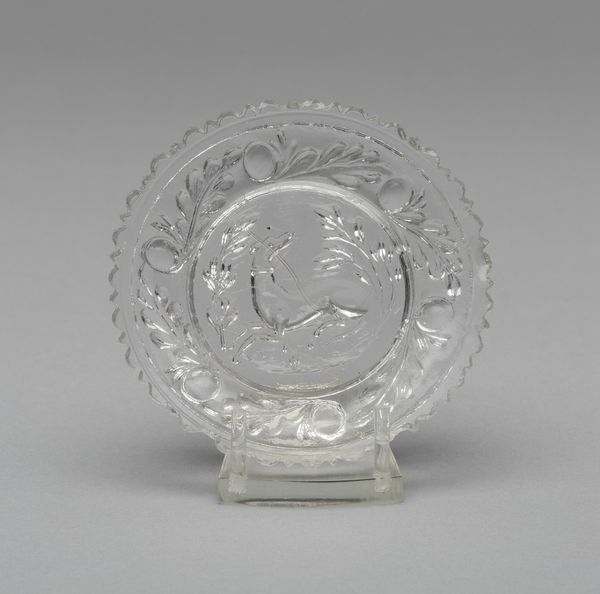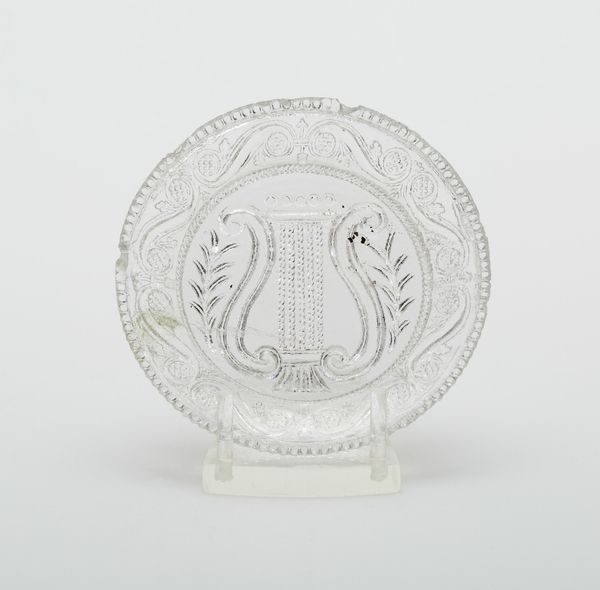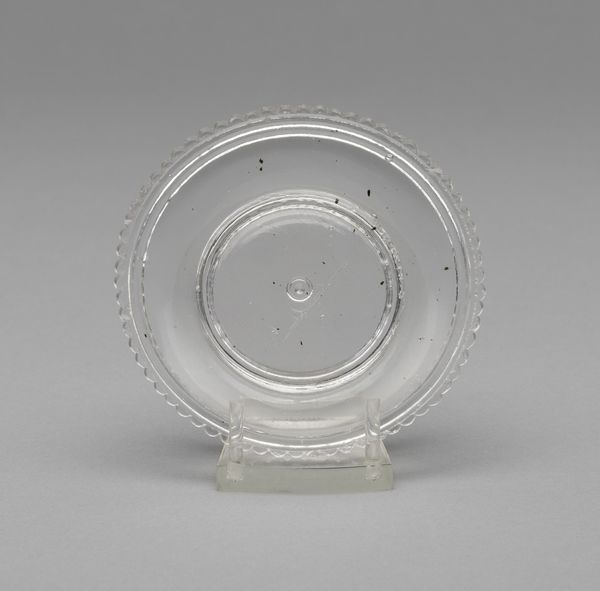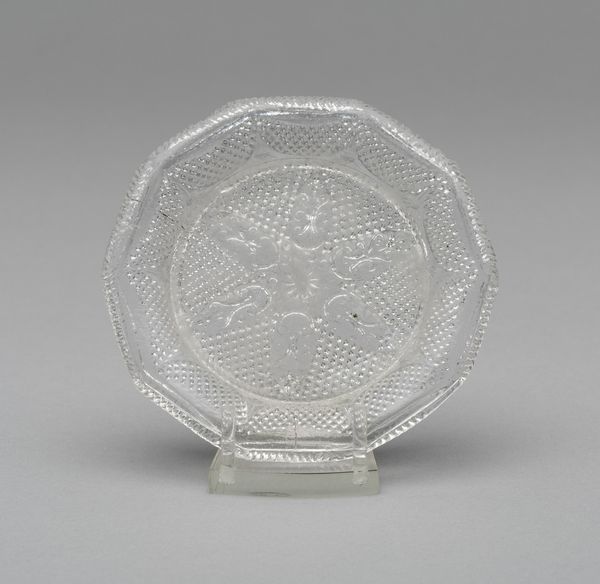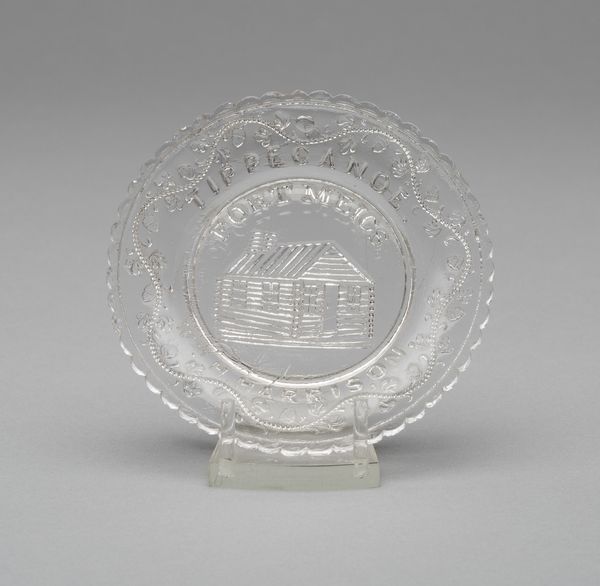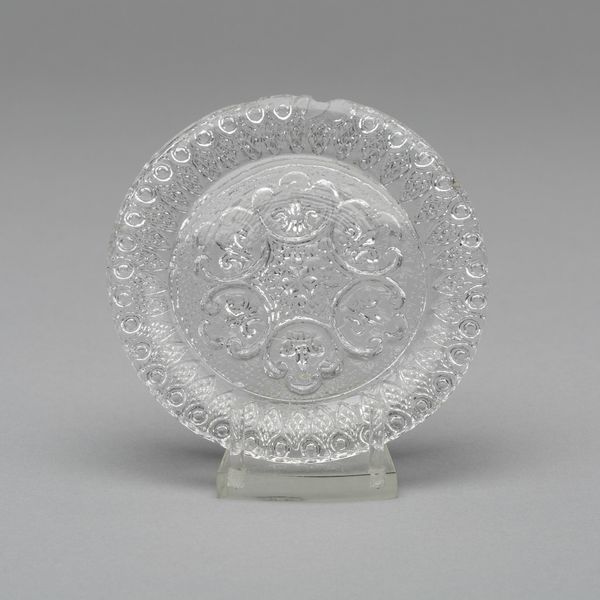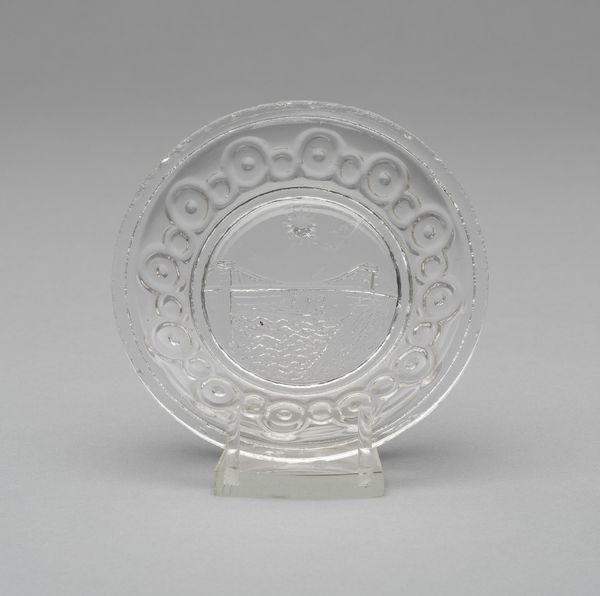
glass
#
glass
#
decorative-art
Dimensions: diam. 9.4 cm (3 11/16 in.)
Copyright: Public Domain
Curator: Here we have a charming cup plate crafted around 1843, held in the collection of The Art Institute of Chicago. Editor: It’s incredibly delicate, almost ethereal. The way the light plays on the clear glass...it feels very light and pure, wouldn’t you agree? Curator: Absolutely. Consider the cultural associations of lighthouses. Their imagery often suggests steadfast guidance through treacherous conditions. Editor: Speaking of which, just imagining the glassmaking process! Was this pressed glass, I wonder? It seems almost too detailed for a free-blown piece. How many hands touched this object, and how many similar items were turned out each day? The context is fascinating. Curator: Mass production of this kind definitely democratized the availability of such imagery. But the symbolic potency of the lighthouse perseveres, especially along coastal regions. The light promises something powerful: safety and the promise of return. Editor: Exactly. Even the materiality evokes a sense of precision and control in a pre-industrial era rapidly hurtling toward it, what about its production mirrors these larger shifts? Curator: The plate perhaps served as a form of accessible artwork for a rising middle class. To hold it is to feel a tactile link with the symbolic significance of lighthouses—their cultural persistence echoing their literal architectural presence through time. Editor: Looking at it from the ground up, glass making had very local constraints and networks to take into account; everything from fuel, silica sand composition, and local skills influence the objects produced at particular works, and the ways they reflect broader market conditions, of course. So, that promise might not be there for everybody involved... Curator: Point taken, yes. I find it fascinating how something as utilitarian as a plate for setting teacups has this profound visual depth. A lighthouse etched in clear glass encapsulates so much human striving for connection and clarity, a shining beacon made material. Editor: Indeed, from source materials and conditions of creation, through its form and aesthetic, glass in general allows us to consider questions of transparency and opacity. An almost magical everyday item to think about labor, class, and visual symbolism.
Comments
No comments
Be the first to comment and join the conversation on the ultimate creative platform.
